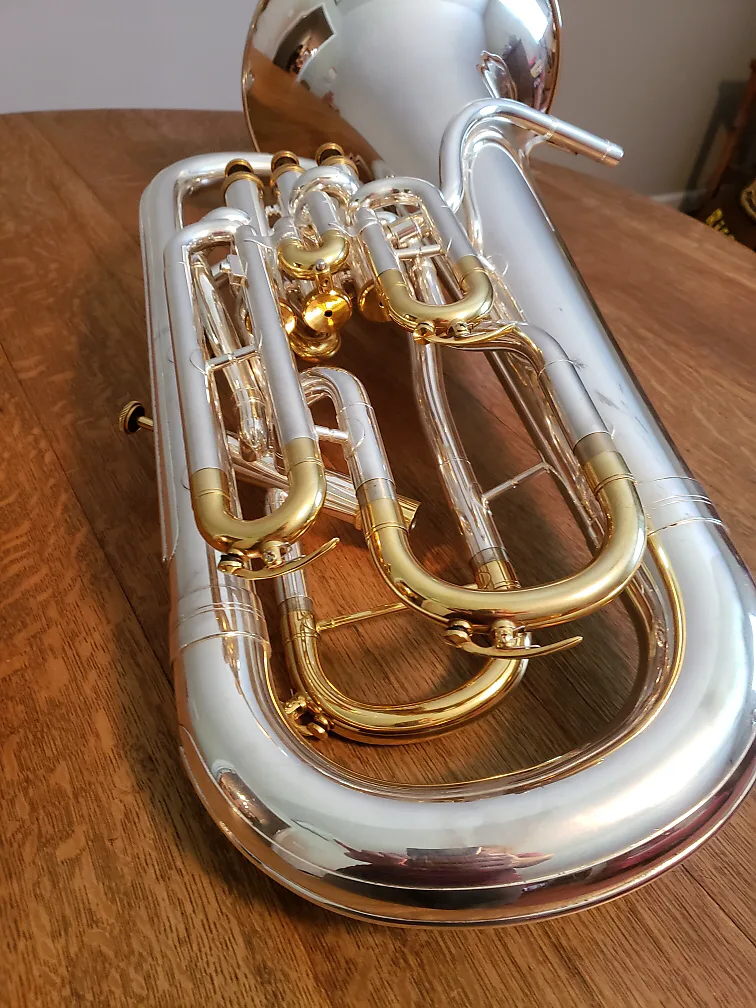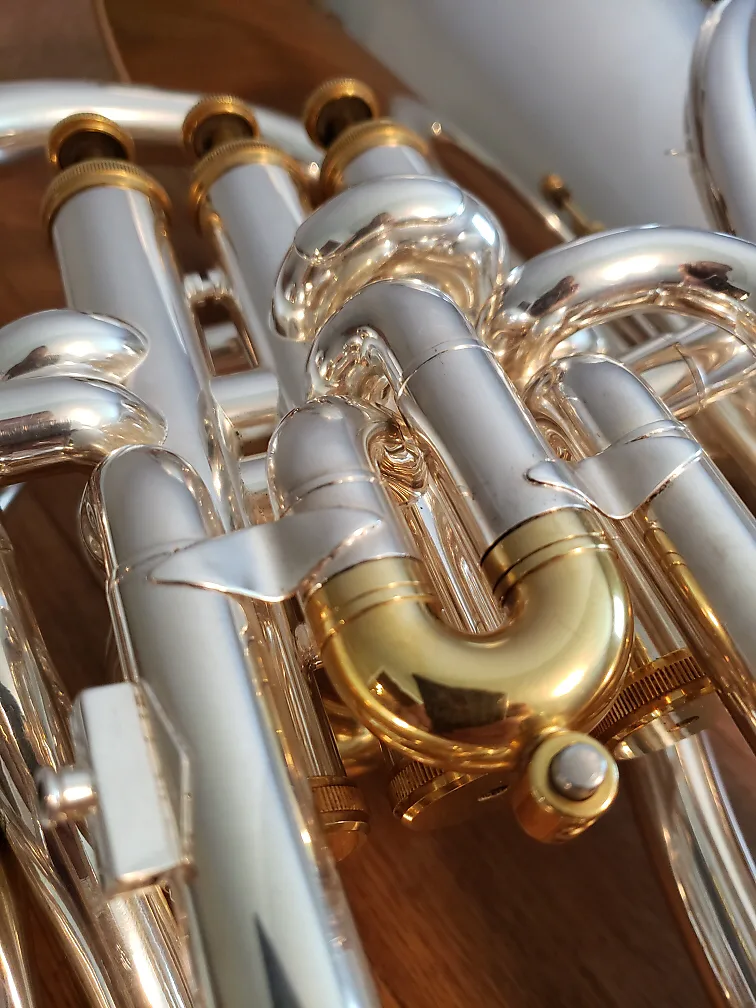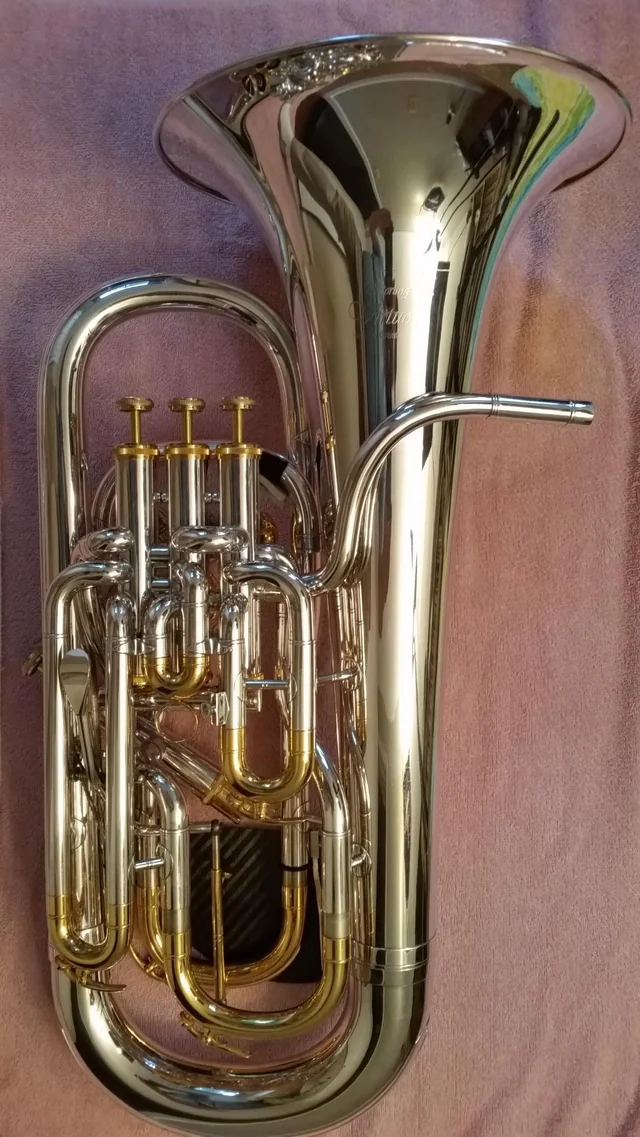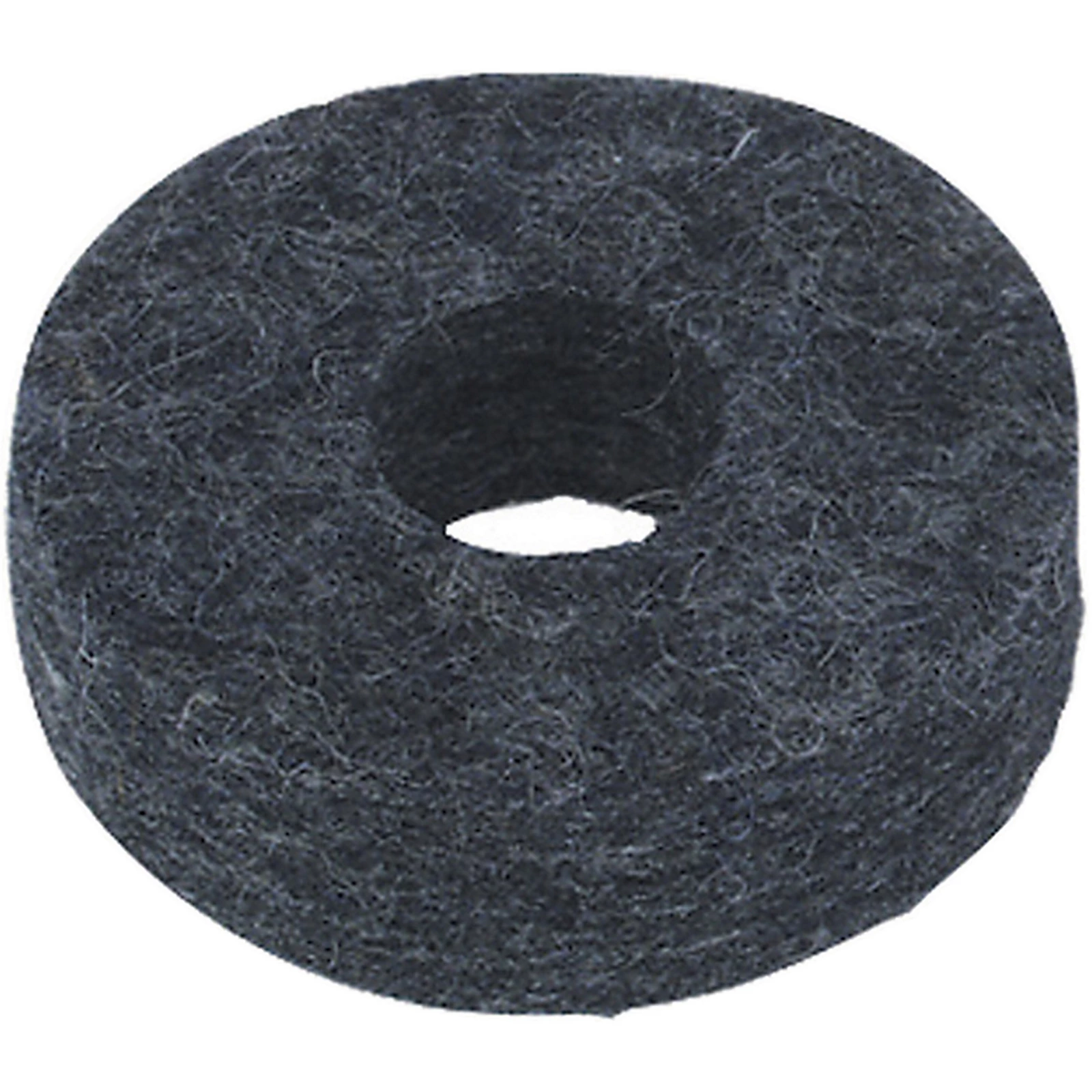Sterling (UK) Musical Instruments
- Mark Glover
- Oct 13, 2023
- 7 min read
Updated: 17 hours ago
This blog post is going to discuss my journey with Sterling Musical Instruments and also provide some honest information to help anyone that owns one, or is interested in buying one. I am mainly referring to euphoniums but a lot will apply to the whole range of instruments made by Sterling.
Note - This blog post is old and does not refer to the NEW line of Sterling euphoniums coming out in 2025. Here is the website for the NEW euphonium - Sterling Virtuoso Euphonium – Sterlingbrass.
Important
I first want to say, I receive little to nothing from Sterling Musical Instruments. I love my euphonium and are privileged to have such a great instrument but I get almost no support from the brand. I sometimes get free repairs or have had small contributions such as payment for an accompanist fee or a paid advert in a brochure for a tuba and euphonium conference, but that is all. If I needed costs covering for me to perform abroad, despite the fact that I would be putting the Sterling brand in the spotlight, I usually get nothing in return for this.
If I were to be offered an opportunity with another instrument manufacturer, to play their instrument and receive better support. Providing I loved the instrument as much as I do my Sterling, then I would swap. I perform a lot, and me performing is free advertisement of whatever instrument I play, the very best players should be rewarded for this in my opinion, especially due to the fact of the amount of time and effort is required to maintain such high standards.
The Start
My journey with Sterling started in 2014 when I was living in Singapore. I was working with a company called Music360 who distribute the Sterling range in South East Asia. At the time, I had an old British made Besson Prestige (which I loved) but I always had feedback about my sound being stuffy and not clear.
I tested numerous Sterling's in Singapore but none felt right for me. Every individual instrument was slightly different and even though it took me a while to realise, this is actually Sterling's strongest selling point. They are not all the same 'off the shelf' instruments so the only way it was going to work for me, was if I had some say in the basics of the instrument myself.
During a trip back to the UK, I was given the opportunity to visit the manufacturer and test some more. I took a good friend with me whose ears I trusted and to cut a long story short, one of the euphoniums I tried stood out and I decided to go for it. Here are some pictures of my euphonium.
Custom Made Sterling Musical Instruments
The best thing about my euphonium is that is was custom made for me. Not many brands offer this sort of service and although it won't be to everyone's liking, it is still something that sets this brand out from the rest. Yes it can be time consuming and potentially more expensive, but if you are patient and only expect the absolute best in the product you are buying then I hugely recommend it.
However, how long will this last? The likelihood is that soon, the Sterling brand will either be no more or will have been taken over by a company like John Packer in the UK. This may mean the Sterling Virtuoso is available to buy but it will only ever be one standard model that is made completely in China.
Nowadays, other manufacturers have started to offer more customisations. The Adams range of euphoniums is a good example of this and rightfully so, are building an excellent reputation all over the world. However, Adams, Besson and others are huge corporations with massive resources at their disposal. Sterling is a tiny company by comparison and really can't be compared to some of these large scale manufacturers, many people do not realise this.
I have heard it said, that if you want a new instrument that plays like the old Boosey & Hawkes instruments did, then buy a Sterling. The owner and team of craftsmen worked for Boosey & Hawkes prior to setting up Sterling, and work hard to produce instruments that are modern day masterpieces.
You have to be picky though and check the standards carefully. There have been too many reports of Sterling instruments being sent to new owners with problems on them. Or worse, reports of customers waiting far longer than expected to get their instrument despite full payments having been made.
Note - This blog post is old and does not refer to the NEW line of Sterling euphoniums coming out in 2025. Here is the website for the NEW euphonium - Sterling Virtuoso Euphonium – Sterlingbrass.
Try Before You Buy
Something that is so important when considering a new instrument is to try before you buy. You need to buy with your ears and your feelings rather than with your eyes. So many musical instruments can look phenomenal, different finishings, engravings and all sorts, but it is the sound that counts and your ability to communicate what you want with it. It is a great feeling when you have a head turning instrument but even more empowering when you can make it sound amazing as well.
There can be so called instrument artists out there who are given that title merely by purchasing the product. Or in the case of mouthpieces, some products are given out for free to some well known players as a tactic to drive sales to everyone else. What works for one person will not always work for you so always try before you buy and if something is working for you, put your time into your own practice rather than spending time researching different instruments and brands. If you get the opportunity to test something, always take a friend, teacher or someone who can do a blind test to help with your decisions.
In the photos below you can see more pictures of various Sterling instruments.
Once I received my new Sterling euphonium, I sold my old Prestige to a customer in Singapore. The profits from this were used for a small family investment.
Note - This blog post is old and does not refer to the NEW line of Sterling euphoniums coming out in 2025. Here is the website for the NEW euphonium - Sterling Virtuoso Euphonium – Sterlingbrass.
A lot of students and amateur musicians in South East Asia were interested in the brand and also in the range of 'John Packer Sterling' instruments which are a collaboration between John Packer and Sterling.
The very first concert I did using my new euphonium was a performance of 'The Planets' with an orchestra in Singapore and it was amazing. Here is a video in rehearsals. I was not looking back and very happy to have been provided the opportunity to be an artist for this quality brand.
Over the years, I have been incredibly lucky to have performed around the world and my euphonium has been top class. I think it takes the right sort of musician to play a Sterling. I don't think they are the easiest instruments to play. They are sturdy, well built instruments that will take everything you can throw at them (air wise!), you have to work on it to achieve the full potential but the reward is better than you will have ever expected. You also have to maintain the instrument carefully, just as you would any musical instrument.
I have received messages from a few unhappy Sterling customers over the years complaining about valves or triggers, only to find out that the instrument has never been serviced or even given a basic clean at home.
Let me outline a couple of big tips for anyone that owns a Sterling instrument. Presuming you use it regularly and keep it well looked after inside and out, it shouldn't require any further treatment but these things have helped me.
Main Tuning Slide Trigger
The trigger on any instrument, on the main slide, needs to be kept clean but I use a combination of Vaseline, a good valve oil (like Blue Juice) and trombone Slide-o-mix to keep it moving freely. I usually apply a generous amount of Vaseline, give the slide a move, then a few drops of oil, again move it in and out and finally the Slide-o-mix. Then wipe off any excess and good to go.
To buy or browse any of these products, please use my Amazon affiliate links:
Valve Problems
I always find, if you play your instrument often, clean the valves when they need it, then you never need to oil the valves. If you leave your instrument somewhere hot, the valves can dry out. If you let them get dirty and then don't play it for a long time, they will never work well. Inaccurate finger position can also result in poorly working valves. So generally, valve problems are usually caused by the owner. A few tips I can offer are related to guides and felts. As with anything, experiment for yourself to find answers, my findings are based on my experience and might not work for you.
Most instruments have a plastic valve guide (see pic). If you can feel any left/right movement in your valve then it means your guide is worn. The optimal situation is that there is no movement but this means the guide has to be perfectly snug with the valve guide groove in the side of the valve casing. This will result in better functioning valves but you may need to very lightly file the guide to get the perfect fit.
The other thing I find is that if my felt at the base of the valve stem is wet then my valves will stick. What is the number one reason for wet felts? Putting your instrument down on the bell, or upside down in anyway so that any water in the valve moves up and gets soaked by the felt. Always avoid putting your instrument the wrong way up and always dry those felts. A sign they are waterlogged is when you see water on the valve stem. Just remove the cap and dry the felt with some tissue.
Interested in finding out more about Sterling Instruments?
No matter where in the world you are, the Sterling range can be available for you to buy at the moment. This may not always be the case in the near future. You could find a local instrument shop that already sell them. Such as Music360 in Singapore. Not all countries have dealers, but if you are a music shop and you would be interested in stocking the Sterling range then that could be an option. You can contact me (markglover.euph@gmail.com) and I will assist you in the process or you could even contact Sterling directly.
Note - This blog post is old and does not refer to the NEW line of Sterling euphoniums coming out in 2025. Here is the website for the NEW euphonium - Sterling Virtuoso Euphonium – Sterlingbrass.
I hope this blog is useful, thank you for taking time to read it.
Mark Glover
12/10/2023








































